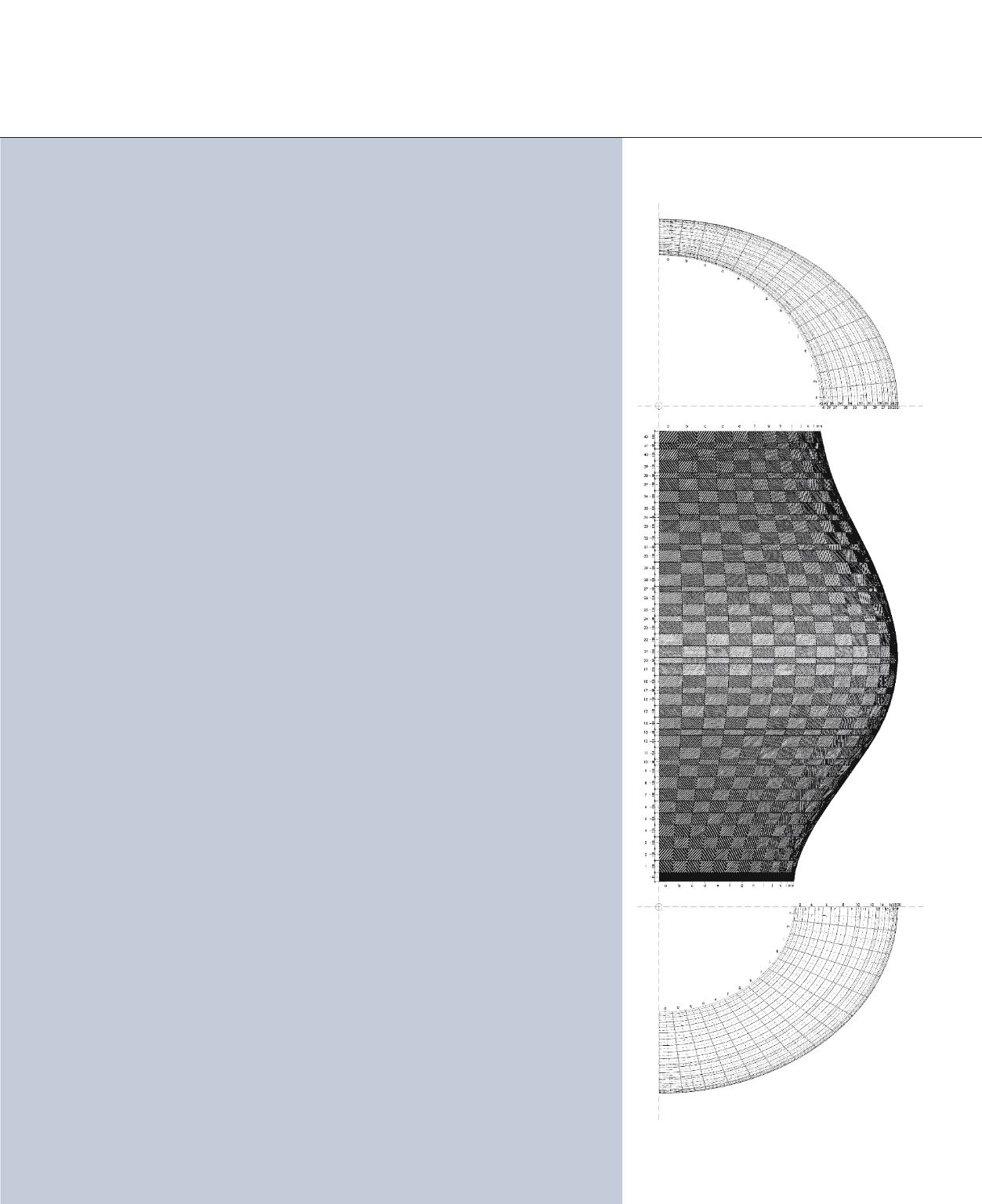
132
EUROPA
through a simple and repetitive pattern,
which whilst stressing the elementary
division of panels, allows to perceive dif-
ferences in luminous texture and visual
penetration within the volume. The inside
of the glass is silk-screened to achieve a
variable transparency from 33% to 75%
(edge effects not included). The pattern is
made up of 3/4 inclined lines horizontally,
placed alternating in one direction and the
other. In one direction, the strips have a
constant width of 5 cm for a variation in
the interval separating them, ranging from
5 to 15 cm, whilst in the other direction,
the strips have a width of 7.5 cm with a
separation interval ranging from 2.50 to
12.50 cm. The silk-screened patterns are
centred on the diagonal of each of the
trapezoidal panels, in such a way that the
angles are made up of non-silk-screened
glass. The draughtboard of patterns contin-
ues without interruption on the remaining
quarter surface of the lantern. The image
can therefore not be mirrored.
Dr
philippe samyn
, engineer
The façade mullions are fireproof tubes
measuring 100 mm x 200 mm onto which
glass panes are affixed. They are compressed
from top to bottom. They are elements with
variable geometry, i.e., they include a large
number of centres of curvature. When these
framework elements are arranged on top
of each other, elastic deformation occurs,
which has to be compensated. And yet
this deformation is not homogeneous and
develops asymmetrically since the lantern
is supported. This structure’s geometry is
made up of 56 mullions. Initially, the division
of the ellipse was calculated for constant
angles radiating from the central foyer. Yet
this angular equality resulted in cutting out
the arc (the circumference of the decks) into
segments of variable size: the arc segments
are longer near the large axis of the ellipse
and shorter near its small axis. As the arc
segments resulting from this division deter-
mine the dimensions of the glass panels on
the lantern’s external faces, the ellipses were
finally divided in accordance with variable
angles, to achieve arcs with constant seg-
ments. As the ellipses are different on each
floor and the division must be the same on
all floors (due to the necessary stacking and
structural continuity of the mullions), the
division into constant arc segments is only
achieved on a single level, more particularly
on the second floor.
The lantern’s surface is made of a double
glass skin. The shell is created by the stack-
ing of 42 elliptic cone trunk segments. Each
of these 42 segments is divided into four
quarters and each quarter into 14 sections.
Each quarter of the lantern’s surface is
therefore made up of 588 (42 x 14) arched
trapezoidal panels, with curved horizontal
ribs. A simple perception of the succession
of the façade’s order of height – the percep-
tion of its scale and its proportions based
on the unit of measure provided by the
glass segments – would have consisted of
a simple alternation of full and void spaces
like a draughtboard. The chosen solution,
more subtle, rather uses the variations of
transparency of the lantern’s body, achieved
GLASS ELLIPSES


